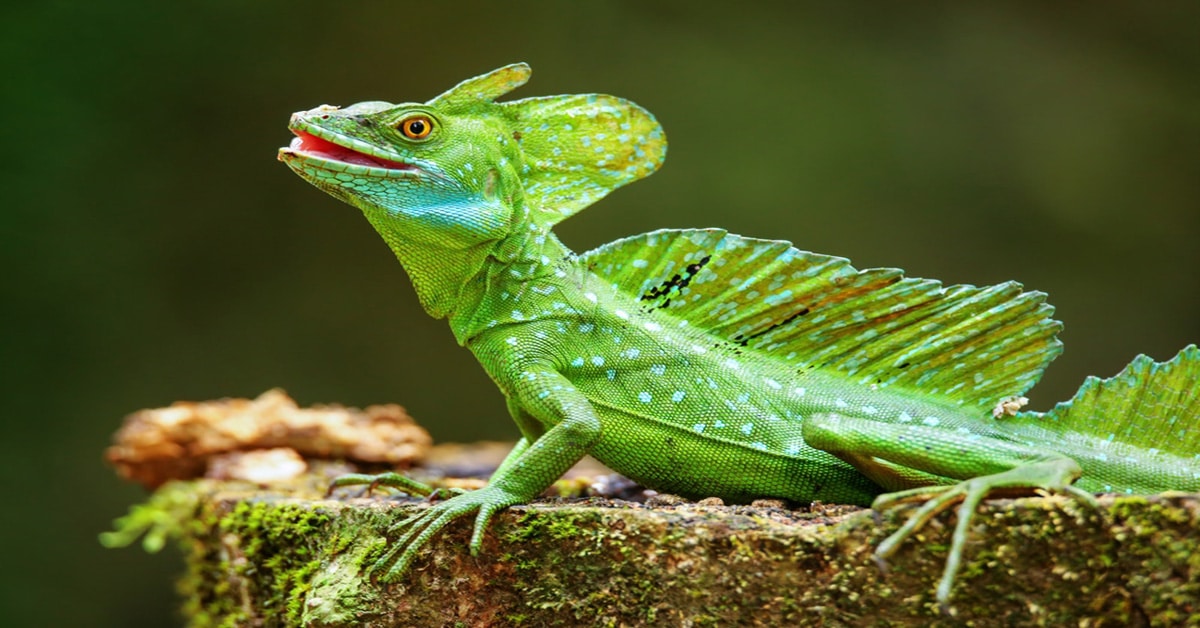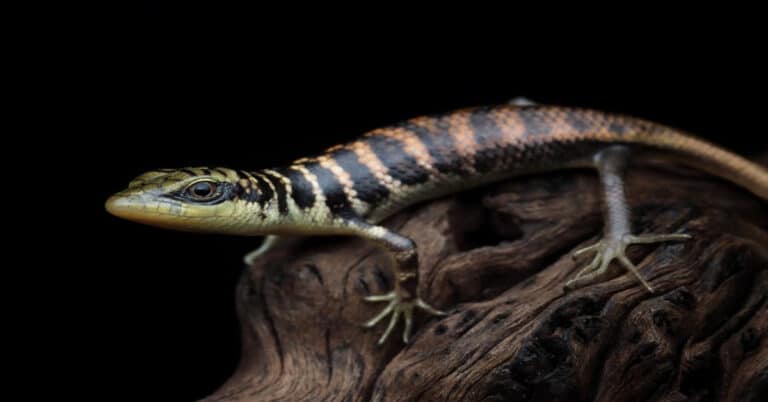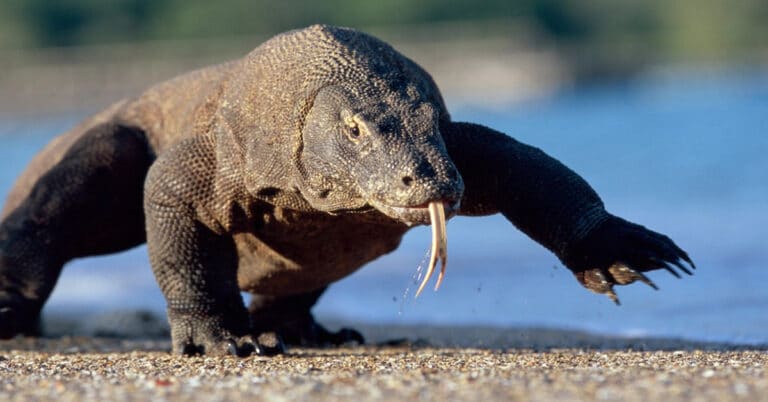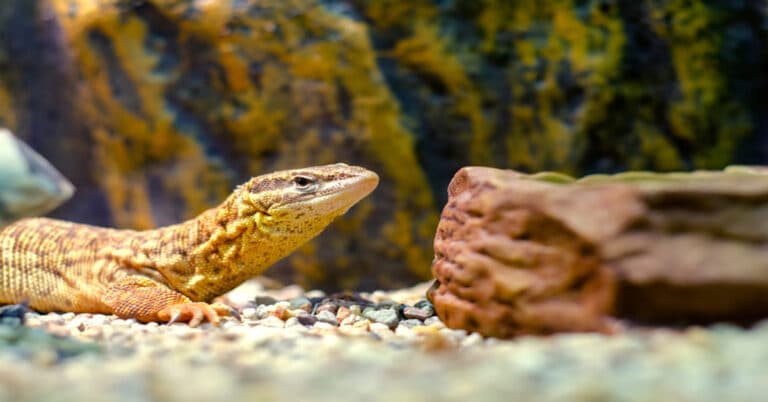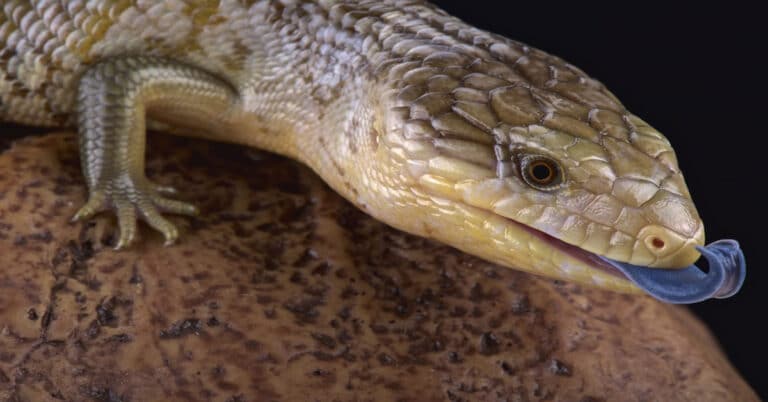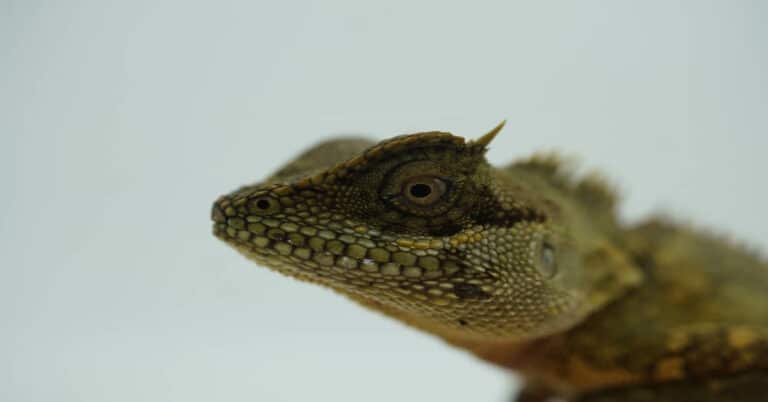Basilisk Lizard
Scientific Classification
| Kingdom: | Animalia |
| Phylum: | Chordata |
| Subphylum: | Vertebrata |
| Class: | Reptilia |
| Order: | Squamata |
| Suborder: | Iguania or Sauria |
| Family: | Corytophanidae |
| Genus: | Basiliscus |
| Species: | B. basiliscus |
| Binomial name: | Basiliscus basiliscus |
In the Southern and Central American rainforests, adjacent to the streams you see the common basilisk (Basiliscus Basiliscus) lizards. The basilisk lizard remains part of the Corytophanid group. Because of its seeming ability to run over water, they call it called Lagarto de Jesus Christ, the Jesus lizard or Jesus Christ lizard.
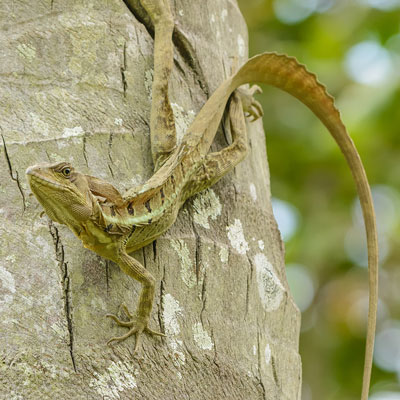
Anatomy
The huge size and the elevated fin-like crests running over its back, makes it different from the other species in its group. Their tails and heads possess a high crest. The color of both the sexes is olive to brown, and they have stripes colored yellow, cream or white on the top lip and another stripe on both sides of their bodies; These stripes contrast heavily in the juveniles and fade away as they grow. The specially designed and super special feet are a blessing to them. The basilisk lizard runs on water, this capability makes it fatal to insects started calling it the ‘Jesus Christ Lizard’
The mouth of the basilisk lizard is large with saw like teeth appearing on the inner sides of the jaw. They run at a speed of 7mph (11km/h). Besides its familiarity with running over water, the basilisks are excellent swimmers and climbers, they have also the ability to remain under water for half an hour. The life span of this lizard is 7 years in captivity, whereas in the wild, predator menace shortens their life to a less period.
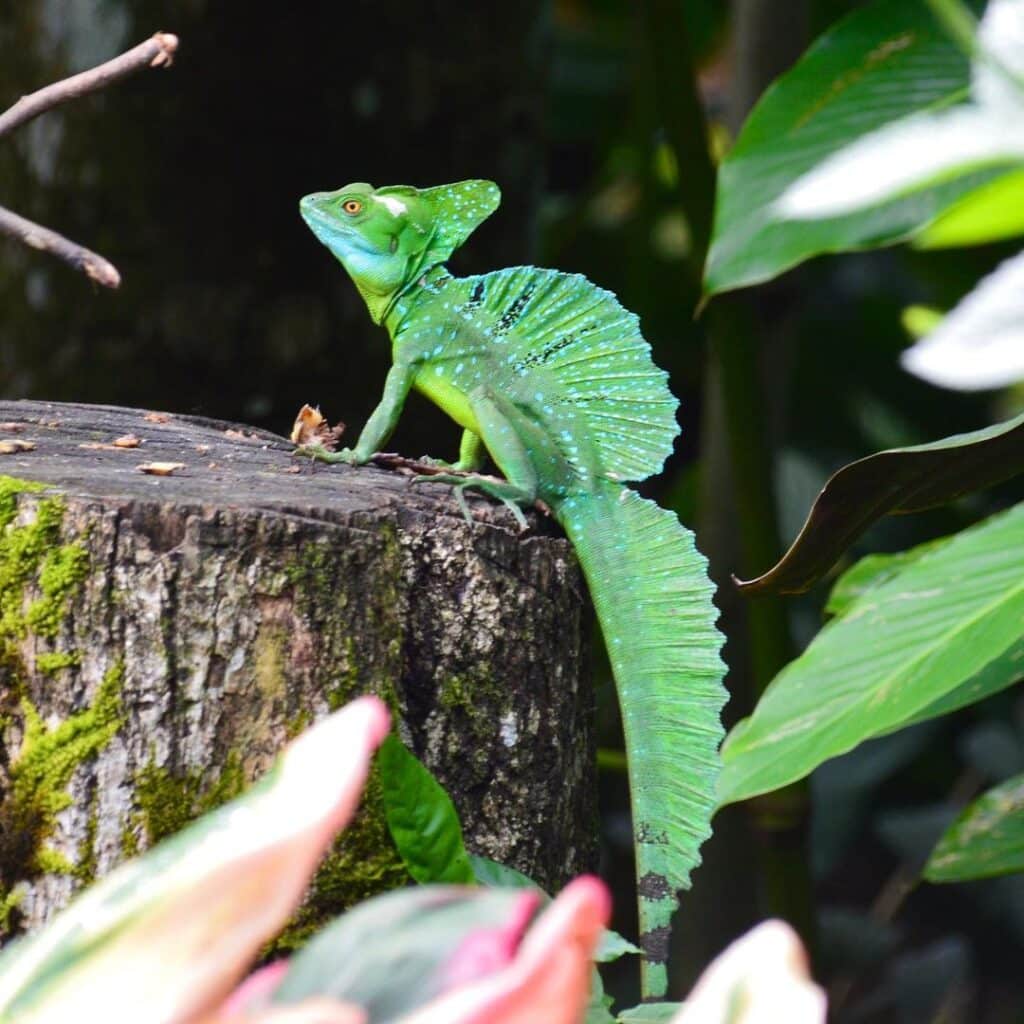
Behavior
In the daytime, you can see the Common Basilisk basking in the sunlight. During the night, they stay on tree tops at a height of 60 feet. Since they are above the ground, the risk of predator attack is less. They are speedy sprinters. The scare of getting endangered gets them on their hind legs, right to the water, and they cross it very fast.
Habitat
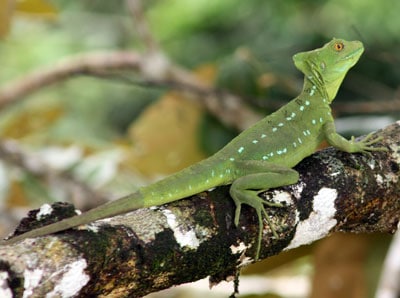
We see the common basilisk lizard all over the Southern, Northwestern and central parts of America among low altitudes and from sea level right up to 600m in Costal Rica, In certain places we find them even at heights of 1,200 m. The range of this type extends along northwestern Colombia to the pacific side to Southwestern Nicaragua and on the Atlantic side of central Panama to northwestern Venezuela.
As a pet
Breeding
The various factors responsible for the efficient breeding are temperature, humidity and photoperiod, cautious incubation of eggs and health of the lizards you are breeding. In order to replicate breeding, you need a high level of relative humidity (about 80% is ideal). It is also necessary to increase the temperature and then to have a dry cool period.
Housing
In captivity, if you give the basilisks the bare minimum necessities, they do well. House them in an aquarium of standard size and keep it locked with screen covers. The size of the tank depends on how many animals you need to care for. A setup with a small group (3 females and 1 male) in a 55-gallon aquarium is ideal.
In order to simulate the natural environment and for the satisfaction of these arboreal natured animals, incorporate sturdy, large branches for climbing as furniture in the aquarium. In addition, include potted plants like Dracaena, pothos, or philodendron in the aquarium. This enhances the attractiveness of the cage and gives the lizard a secure feeling.
Food
The diet of the basilisks includes several types of insects. They relish mealworms, wax worms, spiders, crickets, Zoophobia, grasshoppers and at times pinky mice. Dust their food with a fine powder of vitamin and with calcium supplement with vitamin D3, once a week.
Provide your feeder crickets a diet rich in vitamins. Instead of giving your crickets a good amount of potatoes, give them shaved carrots, oranges and rolled oats. The basilisk lizards enjoy the crickets with the vitamin enriched diet when they feed on them. Some experts suggest gut loading quite a number of times. As regards pinky mice, feed them weekly once or less and dust with a supplement.
Handling
Most basilisk lizards dislike too much handling they are jumpy.

Having discovered a fondness for insects while pursuing her degree in Biology, Randi Jones was quite bugged to know that people usually dismissed these little creatures as “creepy-crawlies”.

